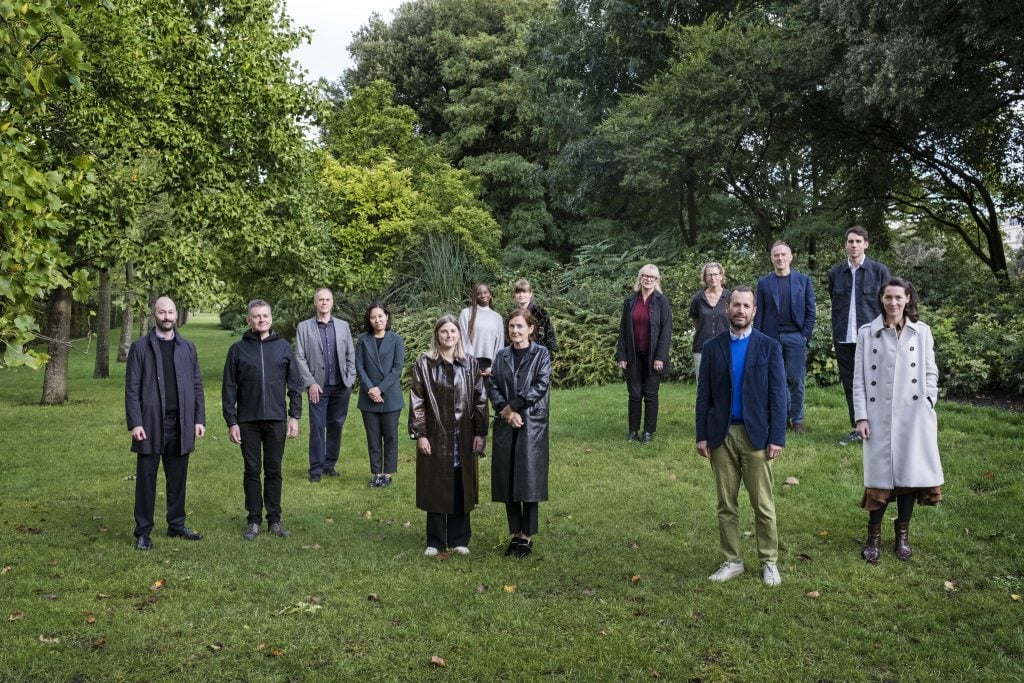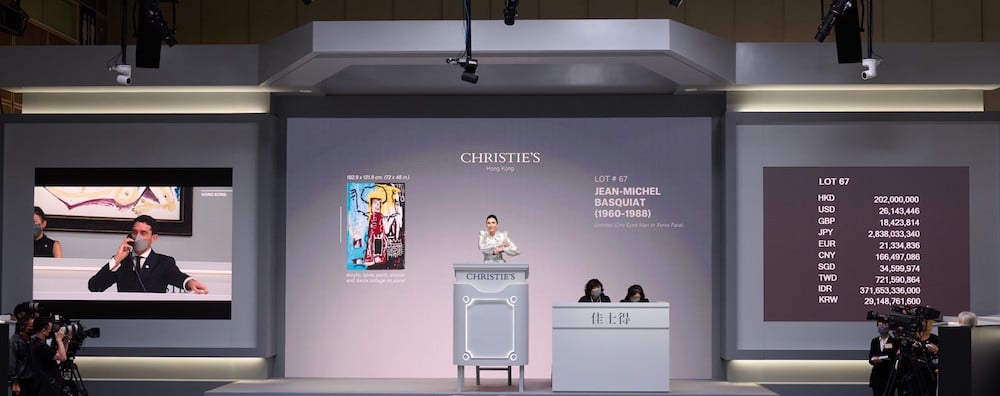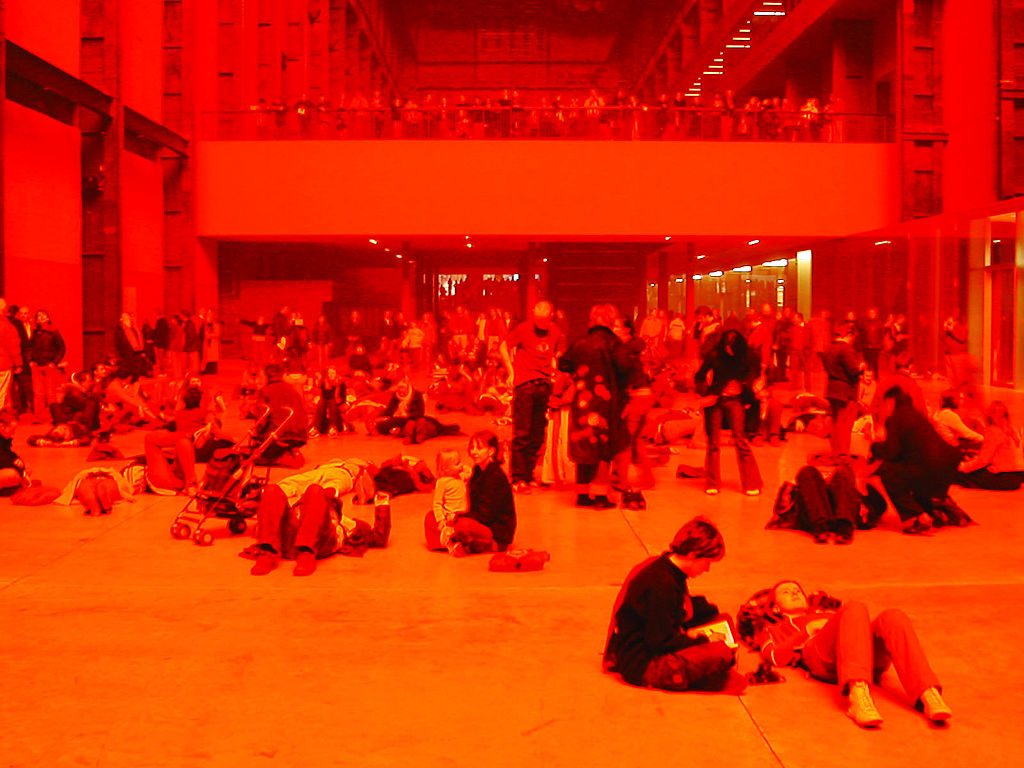Art collector and billionaire head of the investment firm Blackrock Larry Fink had a clear message in his annual written address to CEOs this past January: “No issue ranks higher than climate change on our clients’ lists of priorities. They ask us about it nearly every day.”
Although the letter was stamped with environmental concerns, Fink’s main point was that greener approaches are good for business.
“This is the beginning of a long but rapidly accelerating transition—one that will unfold over many years and reshape asset prices of every type,” Fink wrote. “The climate transition presents a historic investment opportunity,” he said, adding that “climate risk is investment risk.”
In the art industry, where Fink lives his second life, galleries have taken notice. Many are making net-zero carbon pledges. Dealers are participating in symposia to discuss new sustainability strategies. Christie’s announced it would go net zero by 2030, and the multinational gallery Hauser & Wirth announced the same. Both have hired dedicated personnel to handle the challenge.
“Any organization that wants to continue to exist and fulfill its function in 10 years time has to take this seriously,” said Danny Chivers, a climate change researcher and the environmental advisor at the Gallery Climate Coalition, which was founded in October to encourage individuals and companies from the art world to halve emissions by 2030.
But there are key differences between the investment and art industries. In the financial world, there is significant pressure from investors: They pumped $288 billion into sustainable assets in 2020, a 96 percent increase from 2019. In addition, increasingly standardized rules and rankings make it easier for clients to buy into—or pull away from—a company depending on its sustainability merits. Nothing like that exists in the art industry.
What’s more, the pressure in the art world comes mostly from artists and dealers—not from collectors, who have been less vocal. Will they finally show up and start exerting pressure?

Hauser & Wirth, Durslade Farm, Bruton, Somerset. Photo: Jason Ingram.
Where Are the Collectors?
In October 2020, the founders of the Gallery Climate Coalition began with just 14 members. Six months later, they had 500, including dealers, advisors, fair heads, and auction houses. Yet there are no collectors listed on the organization’s website. (GCC Supporters Circle requires a one-time donation of at least £1,000). [Update, June 24: There are a few collectors, GCC tells Artnet News, who have donated but who did not want to be listed.]
Dealers told Artnet News that the imperative to take action stems largely from within. Ewan Venters, the CEO of Hauser & Wirth, said it was artists who have been a major catalyst towards greener business practices. But there is little talk of collectors demanding low-carbon shipments, and no dealer mentioned that their business would be compromised if they failed to clean up their gallery’s carbon footprint. (One dealer said their gallery was first going to organize itself internally before presenting clients with the option to “green” the way they buy and ship art.)
In contrast, Tineke Lambooy, a professor of corporate law and an advisory board member to Art/Switch, a nonprofit that promotes sustainability practices in the art sector, told Artnet News that in the finance world, it’s investors who are asking companies to “comply with the OECD guidelines that are in line with the UN global compact principles.”
“Business leaders and finance managers need to be driven by investors’ attitudes towards a greener environment. How that fact translates into the art world is not quite clear yet,” Venters said. (This year, the gallery hired a full-time head of environmental sustainability.)
“We are in a climate emergency, and if we don’t do things differently, the planet will run into trouble,” he added. “Every sector seems to understand that.”

The founding members of the Gallery Climate Coalition. Courtesy GCC.
Where Are Our Green Labels?
When it comes to those who do make pledges, transparency is essential: Promises are only as good as figures. As Fink wrote: “data and disclosure matter.”
Tom Woolston, Christie’s global head of operations, told Artnet News the company is in the process of applying for validation from the Science Based Targets initiative (SBTi), an independent body that helps private businesses hit science-based sustainability targets to align with the Paris Agreement, and gives certifications to those businesses that meet the qualifications.
“You see a lot of organizations that make pledges without necessarily always following it up,” Woolston said. “We’re very sincere about our ambition.” Christie’s now plans to release an annual environmental impact report.
“It can be a very complicated and technical area and we are all on a learning curve,” Woolston added, suggesting that the complex problems made it essential to partner with an organization that specialized in the subject such as SBTi.
Another point of progress would be a rankings system for galleries.
“It is relatively easy for investors in other sectors to look up companies via rankings and make decisions based on them,” Lambooy said. The ESG (environmental, social, and governance) rankings for most stocks is a click away on Google. “It is time to formulate these” for the art market, she said.

Christie’s has pledged to be net-zero by 2030. Image courtesy Christie’s.
A Green Art Market
Things are rapidly improving. Just a few years ago, you’d be hard-pressed to find climate talks at an art fair, much less see sustainability as a top-line concern for art dealers. But the pandemic made the world feel smaller and more fragile. It also led to the largest drop in CO2 emissions since World War II, of up to 7.5 percent. What will behaviors look like as the world returns to some kind of normal?
In a recent article by the editorial board of the Financial Times, the editors warned that as the world comes out of this pandemic, we could see the second largest increase in carbon emission.
As the art world recovers, many in the trade say it is time for collectors to start voting with their dollars.
“The art sector, private and public, is where the imagination of society is,” Chivers said. “If we are going to imagine and make a better future, we need the whole art world to be on board.”
Follow Artnet News on Facebook:
Want to stay ahead of the art world? Subscribe to our newsletter to get the breaking news, eye-opening interviews, and incisive critical takes that drive the conversation forward.









